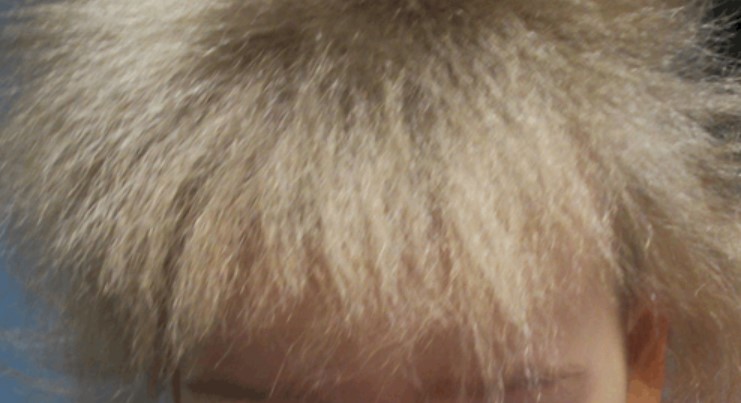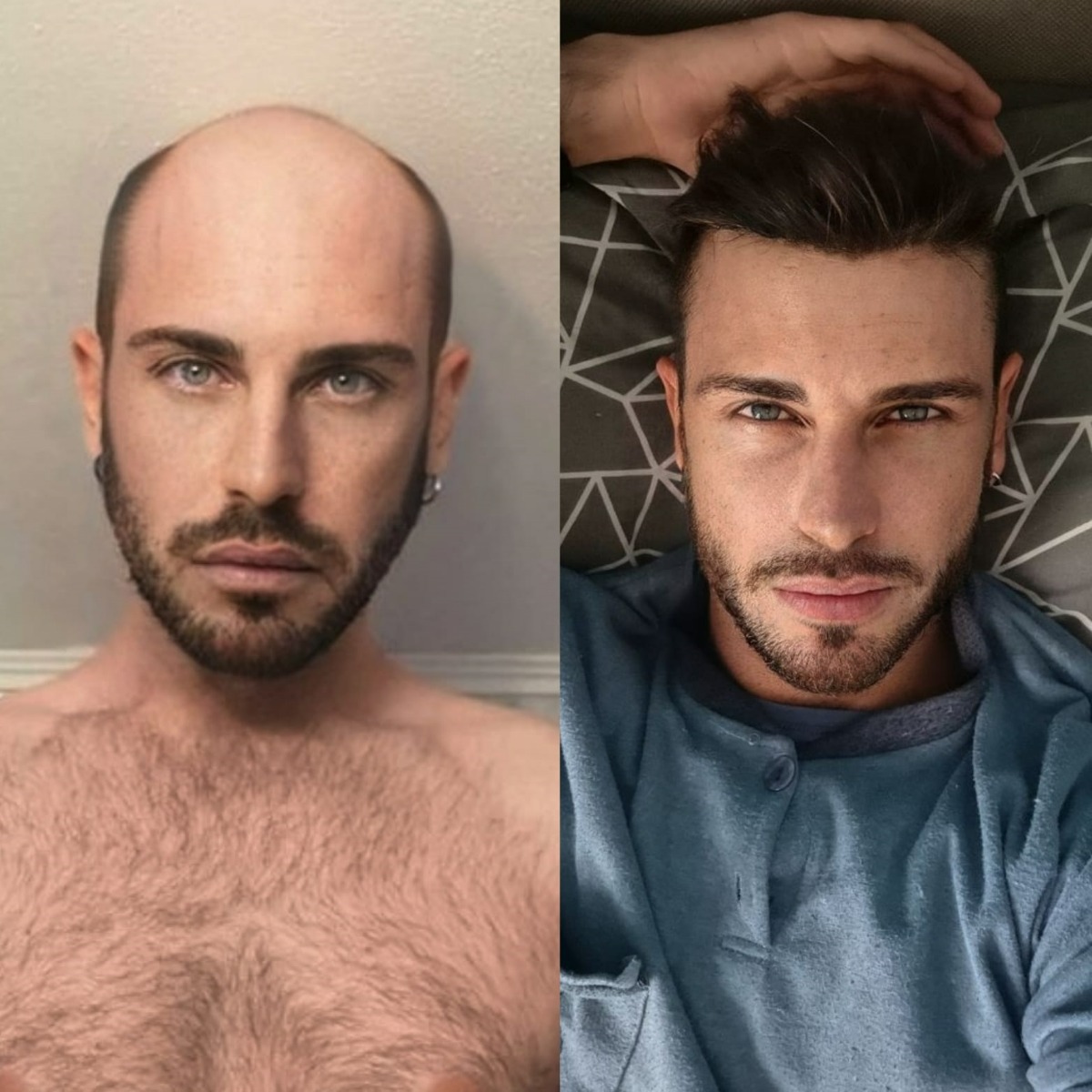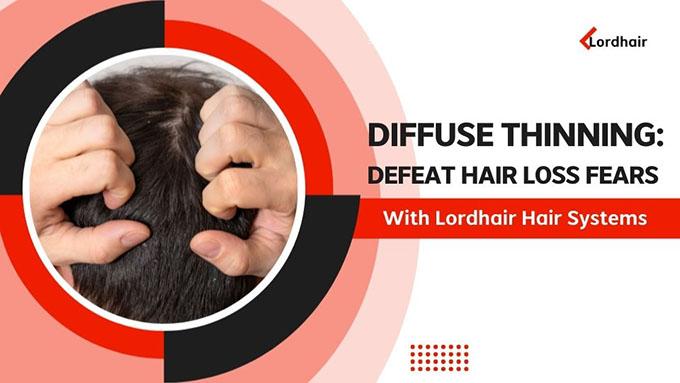What Is Uncombable Hair Syndrome?
- Written by Leo Lordhair
- Mar 6, 2023
- |
- 7 min read
 Listen to the full text
Listen to the full text
Uncombable hair syndrome is a rare and remarkable disorder. While often mistaken for a styling issue, uncombable hair syndrome is an uncommon genetic condition that affects the texture of one’s hair. It is characterized by severely dry and frizzy hair that cannot be tamed with traditional styling products and haircuts. With few treatments available to manage the affliction, individuals with uncombable hair syndrome are left to cope with the syndrome’s unique qualities.
This article will explore the features, causes, diagnosis, and treatments associated with uncombable hair syndrome. The physical characteristics of the disorder will be discussed in depth to provide a better understanding of how it affects individuals living with it. Furthermore, the current treatments available for those suffering from uncombable hair syndrome will also be discussed in order to provide insight into how to best mitigate its effects.

Scalp hair-uncombable hair syndrome.gif by Hana Kathryn Cobb, Alvin Yuhico Tiu is licensed under CC BY 4.0
What Is Uncombable Hair Syndrome?
Uncombable hair syndrome (UHS), also known as pili trianguli et canaliculi, is akin to a wave of unruly locks that constantly defies the efforts of a brush or comb. It is a rare genetic disorder that causes hair to become frizzy, dry, and unmanageable. This condition develops in childhood, often between infancy and age three, but can appear as late as age 12.
Researchers believe it is due to a defect or mutation in the genes that produce proteins called intermediate filaments which give body and shape to the hair. As far as diagnosis is concerned, it can be done by examining the texture of the hair under a microscope for abnormalities. A scalp biopsy may also be used to confirm UHS if needed.
Though there is no known cure for UHS, various treatments such as topical medications and surgery may be used to help manage the symptoms. In addition, haircare techniques such as deep conditioning and regular use of moisturizers are recommended in order to reduce dryness and improve the manageability of the hair. Taking these steps can help individuals with UHS maintain healthy hair while still managing their condition.
A boy with uncombable hair from England provides a striking example of this disorder. Sam Barley is a 10-year-old from Humberston, Lincolnshire, who has the rare hair condition. He currently says that he is proud of his blond frizzy hair type even though many people ask him about his hair and pass comment on it. His main aim is to raise awareness of the condition.
His mother, Helen Barley, first noticed his hair looked different when he was about four years old and she said that she had never seen hair like it before. Almost every week, Ms Barley says she gets asked why his hair looks different, and she is proud of him for bringing awareness to the issue. Scientists only know of 100 cases of this genetic disorder, which is characterized by frizzy, hard-to-comb hair.
What's your hair type? Check out this detailed guide to male hair types, styling, and maintenance.
What Are the Symptoms of Uncombable Hair Syndrome?
There are a variety of symptoms associated with UHS that may be seen in affected individuals. Children with straw-coloured or blond-silver hair may experience symptoms between the ages of three months and twelve years. There is a possibility that the hair colour will change over time. The amount of hair you have is usually normal, but it grows more slowly than usual. Different directions of hair growth are seen on the scalp. The hair may not lie flat against the scalp when combed and hair on other parts of the body is not affected by the condition.
People with this condition can often brush or groom their hair more frequently than those without it, so constant brushing or grooming may cause more damage.
Often, UHS is a standalone condition, but it can sometimes be associated with other diseases requiring medical treatment. Some of these diseases include:
- Ectodermal dysplasias
- Bork syndrome
- Angel-shaped phalangoepiphyseal dysplasia
Your healthcare team will help you determine if UHS is linked to these or other conditions so that a treatment plan can be formed if necessary. UHS may also cause the following symptoms:
- Patchy baldness on the scalp
- Coarse hair texture
- Kinky hair
- Dry hair
- White-coloured hair
Causes Of Uncombable Hair Syndrome
To unravel this mystery, researchers have conducted studies to determine the underlying causes of UHS. Investigations have revealed that UHS may be caused by mutations in several genes associated with normal hair growth and structure. These include mutations in PADI3, TGM3 and TCHH genes responsible for encoding proteins involved in keratin formation and maintenance.
The proteins produced from the PADI3 and TGM3 genes modify the protein produced from the TCHH gene, known as trichohyalin. By attaching (binding) to other trichohyalin proteins and to molecules called keratin intermediate filaments, modified trichohyalin can form organized cross-links. In addition to providing structure to the hair shaft, these links also give it a cylindrical shape.
TCHH, PADI3, and TGM3 gene mutations likely lead to the production of inactive proteins. The hair shaft's shape is altered as a result. Triangular, heart-shaped, or flat cross-sections are more common than cylindrical shapes. A single strand of hair may exhibit all of these irregular shapes. Hair will not lie flat because of its angular shape. Uncombable hair syndrome is characterized by irregular-shaped hair strands in 50 to 100 per cent of children. A glistening sheen is also caused by abnormal hair refracting light differently from normal hair.
In some cases of uncombable hair syndrome, none of these three genes has been identified as mutated. In these individuals, the cause of the condition is unknown.
Diagnosing Uncombable Hair Syndrome
The process of diagnosing uncombable hair syndrome (UHS) begins with a physical examination of the patient. The primary symptoms of the condition are hair that is difficult to comb due to its wiry texture, as well as an inability to style it in any particular way. A doctor will assess the patient's hair and scalp and check for signs of other medical conditions that could be causing the disorder. Other tests such as blood work and genetic testing may also be necessary.
Genetic testing is used to determine whether a person has inherited UHS from one or both parents. It is important to get results from a qualified genetics laboratory to make an accurate diagnosis. In addition, genetic testing can also reveal if a person carries a gene mutation that causes UHS. If this gene is present, then it indicates that the condition is likely hereditary.
In some cases, imaging tests such as MRI scans may be used to rule out other neurological or connective tissue disorders that could be causing similar symptoms. These tests can help doctors differentiate between UHS and other conditions which may have similar characteristics but different underlying causes. Ultimately, an accurate diagnosis requires careful analysis of all available evidence to determine if uncombable hair syndrome is indeed present.

Treatments for Uncombable Hair Syndrome
Treatments for uncombable hair syndrome are still in the evolutionary stages due to its recent discovery and rarity. Various methods have been proposed; however, none have been able to provide a definite cure. The first approach to tackle UHS is by using moisturizing shampoos and conditioners as they may help by curbing the dryness of the hair shafts and protecting them from further damage. This method helps in making the strands more manageable; however, it does not guarantee permanent results.
Another successful treatment option for uncombable hair syndrome is the use of topical medications such as topical retinoids and corticosteroids along with intensive haircare routines involving regular trims. These treatments have shown positive results in reducing tangles, knots, and unruliness of the hair strands while also promoting the healthy growth of new hairs.
Recently, scientists have begun exploring gene therapy as a potential treatment for UHS with preliminary evidence showing some promise. In this approach, scientists use virus vectors to insert functional copies of genes into cells to replace or supplement defective ones responsible for causing UHS symptoms. While promising strides are being made in this field through clinical trials on animals, no definitive conclusions can be drawn until human testing has been conducted on individuals affected by UHS.
To sum up, treatments for uncombable hair syndrome are still being explored with various approaches like moisturizing shampoos and conditioners, topical medications such as retinoids and corticosteroids along with gene therapy providing promising results so far. With further research and development in this area, we may soon find a definitive solution to this rare disorder.
Is There a Link Between Uncombable Hair Syndrome and Hair Replacement Systems?
Hair replacement systems - you may know them better as hairpieces, toupees or wigs - is the hair loss solution we specialise in at Lordhair. Attached to your scalp with specialist tape or glue, our hair systems will blend in seamlessly with your own hair on the back and sides to give you a truly realistic look.

See more transformative hair system before-and-after photos from Lordhair customers
So, how do hair systems relate to uncombable hair syndrome? First of all, our stock hair systems come with a freestyle hair direction meaning you will be able to comb your hair in any direction and style your hair as you wish unlike those struggling with the uncontrollable nature of uncombable hair syndrome. Secondly, Lordhair stock hair systems are made with real human hair. That means you can expect your hair system to respond exactly the way your own hair would so unfortunately, the hair may become matted and tangled over time. Thankfully, with good habits and the right wearing and maintenance solutions, you'll be able to keep on top of your hair and you'll have none of the styling issues young Sam has as he battles to subdue his uncombable hair.
If you are in need of a hair loss solution or have an unmanageable condition like uncombable hair then be sure to check out our full range of men's stock hair systems and wigs for women.
Uncombable Hair Syndrome: Final Words
The condition of uncombable hair syndrome is a rare and puzzling disorder. The condition causes a person's hair to be dry and brittle, standing out in an unruly manner. It is characterized by disordered hair shafts that are unable to be combed or styled. Although the disorder is rare, it affects people of all ages regardless of their ethnicity or gender.
The symbolism of uncombable hair syndrome can be seen in many ways. For those affected by the condition, their locks of unruly hair can represent a sense of individuality and personal autonomy. The disorder can also serve as a metaphor for being different from the rest, but still having beauty that shines through despite being unique and different from what society deems as 'normal'.
Uncombable hair syndrome has few treatment options available at this time. However, for those affected by this condition, it serves as an important reminder that everyone should be accepted for who they are – even if they have an unusual physical feature such as unruly hair. Despite its rarity and lack of treatments available, uncombable hair syndrome demonstrates that beauty comes in many forms and should always be appreciated no matter how unusual it may seem.
However, if you do have the disorder and would like to wear a hair replacement system to give you the control and style you want then Lordhair has the right wigs for you. We offer a variety of stock and custom hair systems for men. Our units are shipped to over 100 countries and come with a 30-day money-back guarantee. If you have any questions then send them to support@lordhair.com or leave them in the comments below and have them answered by our hair experts.
Also read:
- Know the differences between cowlicks and balding
- The connection between high cholesterol and hair loss explained
- Everything covered about a disturbed hair-shedding cycle
- Useful tips to reactivate hair follicles
Check out these fresh product pages as well:
- Shop hairpieces for thinning hair
- The best partial hairpieces for receding hairlines are right here
- Shop wigs for alopecia at the best discounts



